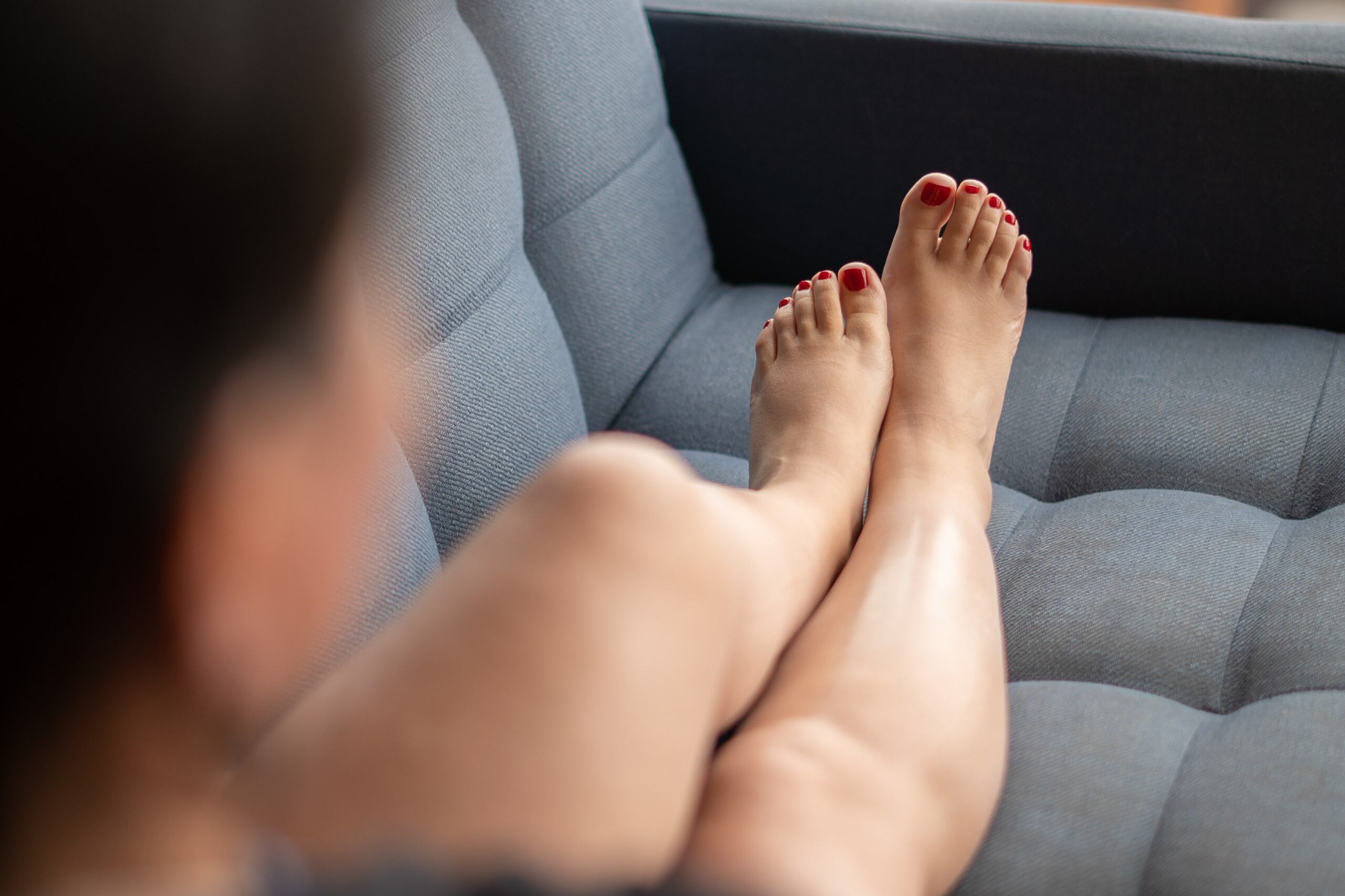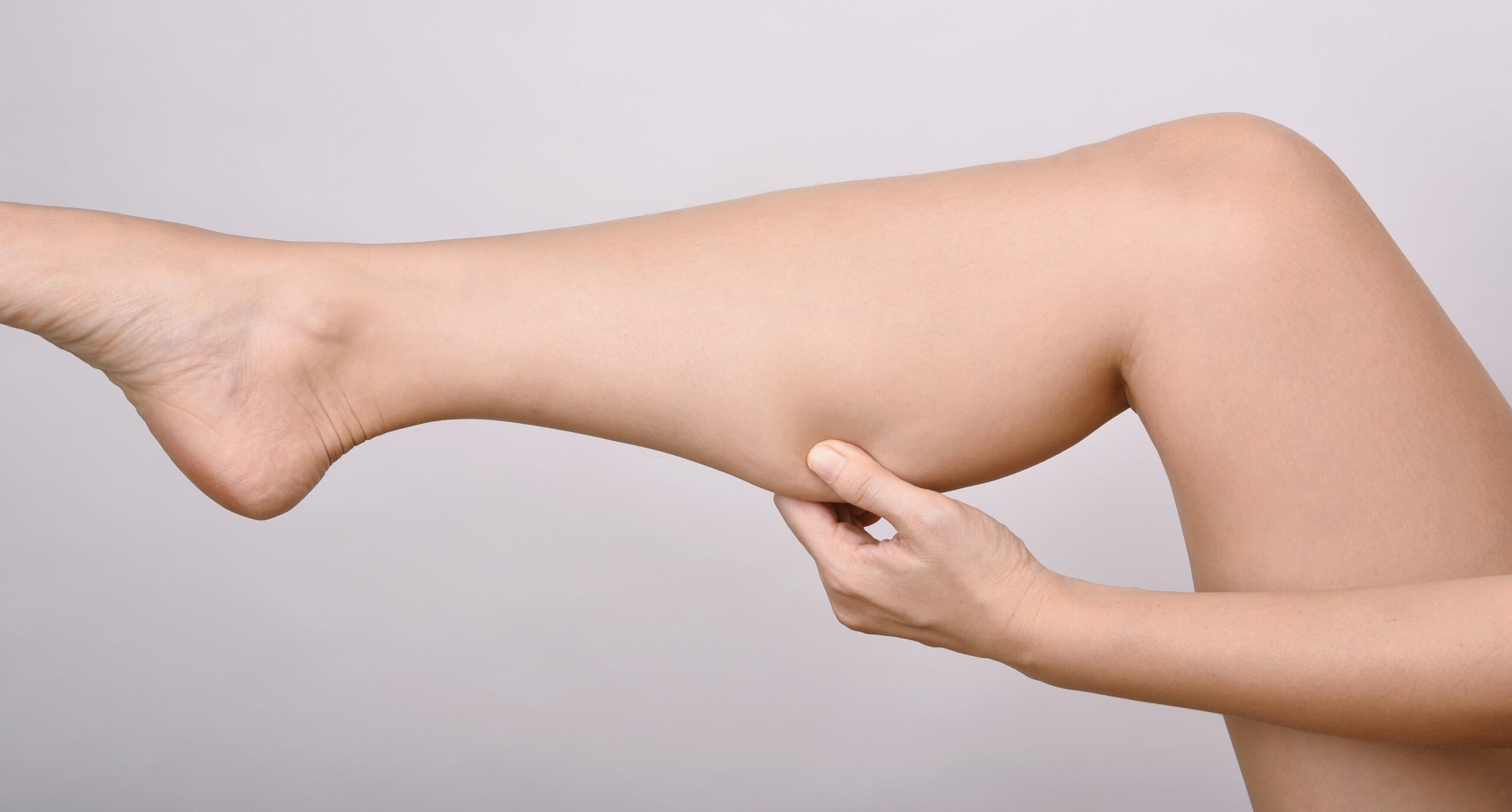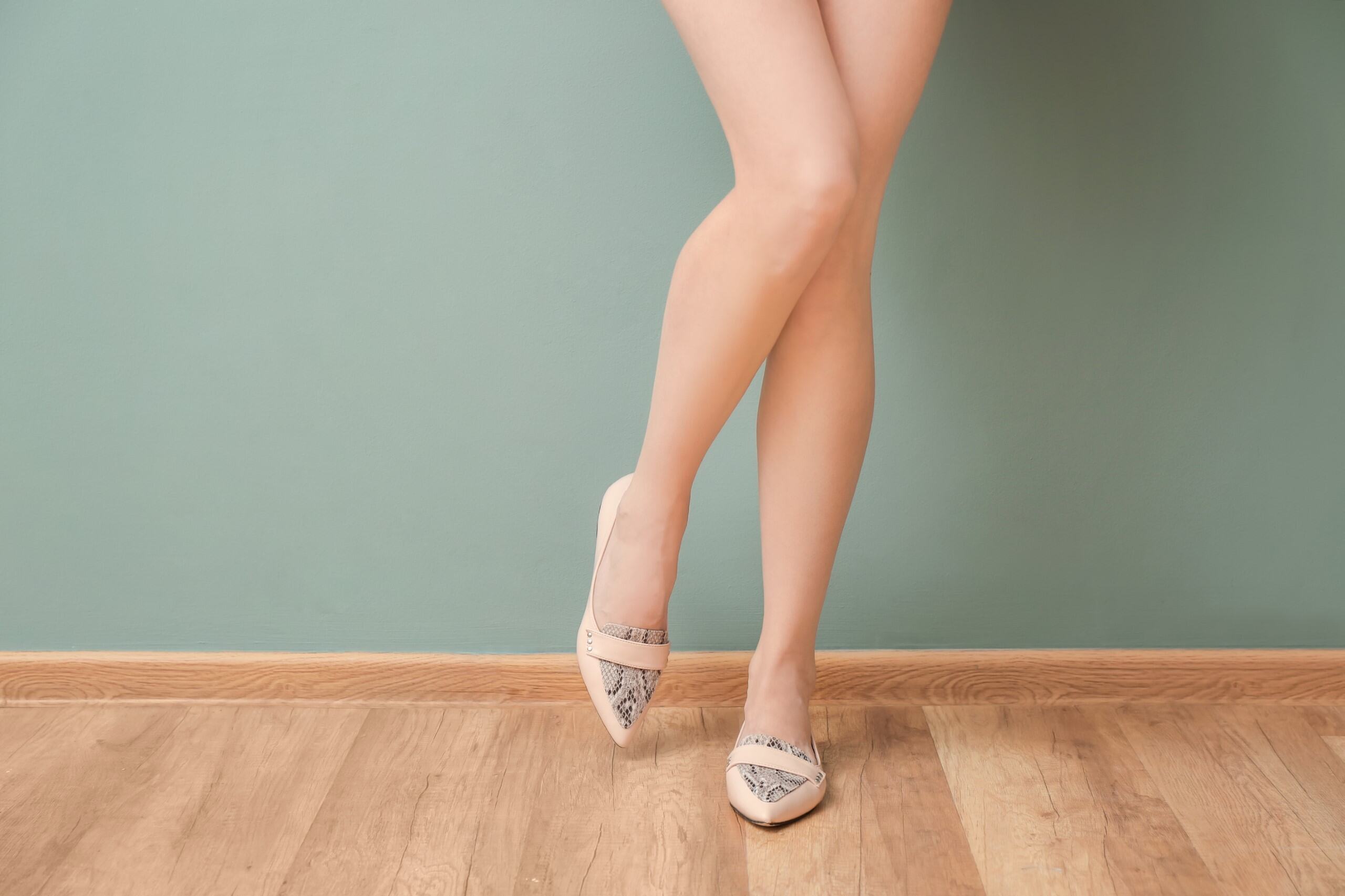Paksut pohkeet

Moni haaveilee kiinteistä pohkeista, mutta kaikilla ne eivät ole luonnostaan sirot ja hoikat. Paksut pohkeet voivat vaikuttaa jalkojen mittasuhteisiin, hankaloittaa kenkä- ja vaatevalintoja ja vaikuttaa itsevarmuuteen. Pohkeiden kiinteytys onkin monille tärkeä tavoite, mutta niiden muokkaaminen voi tuntua haastavalta.
Pohkeen lihaksisto koostuu pääasiassa kahdesta lihaksesta: kaksoiskantalihaksesta (gastrocnemius) ja leveästä kantalihaksesta (soleus). Nämä lihakset vastaavat pohkeiden muodosta ja niiden kehittäminen voi vaikuttaa merkittävästi jalkojen ulkonäköön. Myös pohkeiden rasvakertymät voivat saada ne näyttämään paksuilta ja joillakin pohkeet taas ovat luonnostaan voimakkaat ja lihaksikkaat.
Pohkeiden muotoon vaikuttavat useat tekijät, kuten geneettinen perimä, liikuntatottumukset, painonvaihtelut ja ikääntyminen. Raskauden tai laihduttamisen jälkeen löysät pohkeet voivat olla erityinen haaste, kun taas toisilla ongelmana voi olla lihasten liiallinen kehittyminen. Ikääntyessä pohkeen lihakset voivat menettää kimmoisuuttaan ja rasvakudoksen määrä saattaa kasvaa, jolloin pohkeet muuttuvat veltommiksi. Myös hormonaaliset muutokset voivat vaikuttaa rasvan kertymiseen ja jakautumiseen kehossa.
Jos haluat paksut pohkeet hoikemmiksi, tärkeintä on tunnistaa, mistä ongelma johtuu ja valita oikeat menetelmät niiden kiinteyttämiseen ja muotoiluun.
Mistä paksut pohkeet johtuvat?
- Geneettiset tekijät: Geenit vaikuttavat merkittävästi pohkeen lihasten rakenteeseen ja kokoon. Jotkut ihmiset perivät voimakkaat ja suuret pohjelihakset, jotka voivat tehdä jaloista paksumman näköiset, vaikka rasvaa ei olisikaan merkittävästi.
- Lihasten surkastuminen ja liikunnanpuute: Kun pohjelihakset eivät saa riittävästi aktivointia, ne voivat ajan myötä heikentyä ja menettää kiinteyttään. Tämä voi johtua esimerkiksi istumatyöstä, vähäisestä liikunnasta tai pitkään jatkuneesta inaktiivisuudesta. Lihasmassan väheneminen johtaa siihen, että iho ei enää saa samanlaista tukea lihaksista, mikä voi tehdä pohkeista veltommat.
- Rasvakertymät ja ylipaino: Jos kehossa on ylipainoa, se voi kertyä myös pohkeiden alueelle. Pohkeiden rasvakertymät voivat saada jalat näyttämään paksuilta ja peittää pohkeen luonnollisen lihasrakenteen. Rasvan kertyminen pohkeisiin on yksilöllistä ja siihen voivat vaikuttaa hormonit, ruokavalio ja liikuntatottumukset.
- Ikääntyminen ja ihon veltostuminen: Ikääntymisen myötä pohkeiden kiinteys voi heikentyä, koska lihasmassa vähenee ja iho menettää kimmoisuuttaan. Tämän seurauksena voi olla löysät pohkeet, joissa iho roikkuu ja lihakset näyttävät pehmeiltä.
- Lipödeema ja nesteen kertyminen: Joillakin ihmisillä on geneettinen alttius nesteen kertymiselle ja rasvan epätasaiselle jakautumiselle, mikä voi aiheuttaa turvotusta ja velttoa kudosta pohkeissa. Lipödeema on tila, jossa rasvakudos kertyy epätasaisesti alavartaloon ja aiheuttaa paksuuntuneen ja löysän ulkonäön. Tällöin tavallinen liikunta ja ruokavalio eivät välttämättä auta, vaan tarvitaan kohdennettuja hoitokeinoja.
- Raskauden ja laihtumisen vaikutukset: Raskauden tai laihduttamisen jälkeen löysät pohkeet johtuvat usein ihon venymisestä ja lihasten menettämästä kimmoisuudesta. Nopean painonpudotuksen jälkeen iho ei välttämättä palaudu täysin, jolloin pohkeet saattavat näyttää veltommilta.

Paksujen pohkeiden eri muodot
- Löysät ja pehmeät pohkeet: Tässä tapauksessa pohkeiden lihasmassa on vähentynyt ja iho on veltostunut. Tämä voi johtua ikääntymisestä, inaktiivisuudesta tai nopeasta painonpudotuksesta. Tällöin tärkeintä on pohkeiden lihasten vahvistaminen sekä hoidot, jotka tukevat ihon kiinteyttämistä.
- Turvonneet ja löysät pohkeet: Jos pohkeet ovat sekä löysät että turvonneet, kyseessä voi olla verenkierronhäiriö tai lymfakiertohäiriö. Tämä voi liittyä lipödeemaan tai istumatyöhön, joka aiheuttaa nesteen kertymistä pohkeisiin. Hoitona voi toimia lymfaterapia, liikunnan lisääminen sekä esteettiset hoidot, jotka stimuloivat nestekiertoa.
- Raskauden tai laihduttamisen jälkeen veltostuneet pohkeet: Kun iho venyy ja menettää kimmoisuuttaan esimerkiksi raskauden tai nopean laihtumisen seurauksena, pohkeet voivat menettää ryhtinsä ja napakkuutensa. Tällöin yhdistelmä kohdennettua lihaskuntoharjoittelua ja ihoon vaikuttavia esteettisiä hoitoja voi auttaa palauttamaan pohkeiden muodon.

Hoitomuodot kiinteämpien pohkeiden saavuttamiseksi
Mikäli kotikonstit eivät tuota haluttuja tuloksia, esteettiset hoidot voivat tarjota tehokkaita ja nopeita ratkaisuja paksujen pohkeiden hoikentamiseen ja kiinteyttämiseen. Saatavilla on useita ei-kirurgisia vaihtoehtoja, joilla voidaan vähentää rasvaa ja parantaa pohkeiden muotoa.
- EMSCULPT NEO: Tämä laitehoito yhdistää kaksi energiamuotoa, synkronoidun RF:n (radioaaltotaajuus) ja HIFEM™: n, mikä mahdollistaa samanaikaisesti rasvan vähentämisen pohkeista sekä niiden lihasten vahvistamisen.
- EXION Body: Tässä menetelmässä yhdistyvät ultraääni ja monopolaarinen radiofrekvenssi, joiden avulla voidaan kiinteyttää pohkeiden ihoa sekä vähentää rasvakudosta kohdennetusti. Menetelmä stimuloi myös ihon omaa kollageenin ja elastiinin tuotantoa.
- Pohkeiden kiinteytys kuntosalilla: Säännöllinen pohkeiden lihasten vahvistaminen kuntosalilla voi auttaa kiinteyttämään ja muotoilemaan pohkeita. Tehokkaimpia liikkeitä ovat seisovat ja istuvat pohjenousut, jotka aktivoivat sekä kaksoiskantalihaksen että syvemmän soleus-lihaksen.
- Lymfaterapia ja hieronta: Auttaa parantamaan verenkiertoa ja vähentämään turvotusta, mikä voi tehdä pohkeista napakammat ja vähemmän raskaan tuntuiset.
- EMSCULPT NEO + EXION Body: Tämä tehokas yhdistelmähoito parantaa tuloksia yhdistämällä lihasten vahvistamisen, rasvan vähentämisen ja ihon kiinteyttämisen. EMSCULPT™ NEO rakentaa lihaksia ja polttaa rasvaa, kun taas EXION™ Body tasoittaa selluliittia ja stimuloi ihon nuorekkuudesta vastaavia proteiineja, kuten kollageenia ja elastiinia.
MESQ®
DoctusPlus Oy:n aputoiminimi
Yritys
DoctusPlus Oy
Y-tunnus
3154088-6
Käyntiosoite
Itämerenkatu 11-13 F, 00180 Helsinki
Puhelin
Sähköposti
Aukioloajat
Ma – Pe 11:00 – 19:00